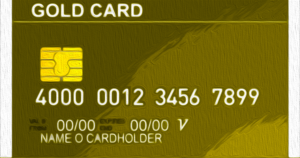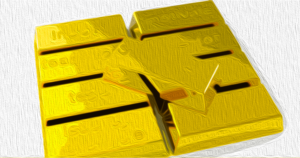Introduction
Significant changes are occurring within the world of illicit cryptocurrency transactions. A recent report by TRM Labs reveals that Bitcoin is no longer the preferred asset for criminals. This shift has important implications for policy makers and calls for a more nuanced approach to regulating digital assets and blockchains.
The Shift in Crypto Usage
According to the report, Bitcoin's share of illicit crypto volume has dropped from 97% in 2016 to 19% in 2022. In contrast, Ethereum and Binance Smart Chain have emerged as dominant players in the field. Additionally, terrorist financing, once predominantly carried out using Bitcoin, has now transitioned to the TRON blockchain. This shift challenges the notion that Bitcoin is synonymous with criminal activity.
Policy Implications
This changing landscape presents several important lessons for policy makers. Firstly, it emphasizes the need to closely examine specific assets and blockchains favored by illicit actors and take appropriate action. Secondly, it provides an opportunity to adopt a more nuanced perspective on digital assets and shape policy narratives surrounding criminal usage.
For example, in the context of terror financing, it is often overlooked that Hamas has ceased accepting Bitcoin donations to protect its sponsors from detection. This highlights the importance of understanding the fluid nature of financial crime and adapting policy responses accordingly.
A Game-Theoretic Perspective
Viewing the issue through a game-theoretic lens allows for a holistic understanding of the dynamics at play. The interactions between various stakeholders, including product developers, regulators, and both good and bad actors, generate a multitude of scenarios. No single player can control outcomes independently.
Adopting a game-theoretic approach also requires stepping into the criminal mind to predict their next moves. Traditional approaches to policy making in combating illegal fund flows are often reactive, with regulations crafted in response to emerging risks. However, the rapidly evolving nature of digital assets necessitates a more proactive approach. Predictive systems that forecast future patterns of illicit fund flows are crucial for minimizing response time to new threats.
Counter-Crime Initiatives
Insights gained from the changing usage of Bitcoin can also aid law enforcement in understanding organized crime syndicates. For instance, crime rings that still rely on Bitcoin may be indicative of a lack of agility in leadership. Analyzing an organization's position on the "agility spectrum" can provide further insights into their resourcefulness and technical expertise. This knowledge enables law enforcement to tailor their efforts in combating each crime ring effectively.
Conclusion
The shift of financial crime away from Bitcoin emphasizes the need for a more nuanced approach to regulating digital assets and blockchains. Applying broad strokes to the entire cryptofinance spectrum in policy debates on criminal usage can be misleading. Policy makers must adapt to the ever-evolving nature of illicit activities and develop dynamic regulatory frameworks. By embracing a game-theoretic perspective and leveraging predictive systems, policy makers can stay ahead of emerging threats and effectively combat financial crime in the digital age.
Frequently Asked Questions
Who holds the gold in a gold IRA?
The IRS considers any individual who holds gold “a form of income” that is subject to taxation.
You must have at least $10,000 in gold and keep it for at most five years to qualify for this tax-free status.
Gold can be used to protect against inflation and price volatility. However, it is not a good idea to own gold if you don't intend to use it.
If you plan to sell the gold one day, you will need to report its worth. This will affect how much capital gains tax you owe on cash you have invested.
To find out what options you have, consult an accountant or financial planner.
How much should I contribute to my Roth IRA account?
Roth IRAs are retirement accounts where you deposit your own money tax-free. You can't withdraw money from these accounts before you reach the age of 59 1/2. You must adhere to certain rules if you are going to withdraw any of your contributions prior. First, you can't touch your principal (the initial amount that was deposited). This means that you can't take out more money than you originally contributed. If you are able to take out more that what you have initially contributed, you must pay taxes.
The second rule is that you cannot withdraw your earnings without paying income taxes. So, when you withdraw, you'll pay taxes on those earnings. Let's take, for example, $5,000 in annual Roth IRA contributions. Let's also assume that you make $10,000 per year from your Roth IRA contributions. On the earnings, you would be responsible for $3,500 federal income taxes. You would have $6,500 less. The amount you can withdraw is limited to the original contribution.
You would still owe tax on $1,500 if you took out $4,000 of your earnings. You would also lose half of your earnings because they are subject to another 50% tax (half off 40%). So, even though you ended up with $7,000 in your Roth IRA, you only got back $4,000.
There are two types if Roth IRAs: Roth and Traditional. A traditional IRA allows you to deduct pre-tax contributions from your taxable income. When you retire, you can use your traditional IRA to withdraw your contribution balance plus interest. There is no limit on how much you can withdraw from a traditional IRA.
Roth IRAs don't allow you deduct contributions. After you have retired, the full amount of your contributions and accrued interest can be withdrawn. There is no minimum withdrawal requirement, unlike traditional IRAs. Your contribution can be withdrawn at any age, not just when you reach 70 1/2.
How much gold can you keep in your portfolio
The amount that you want to invest will dictate how much money it takes. If you want to start small, then $5k-$10k would be great. As your business grows, you might consider renting out office space or desks. So you don't have all the hassle of paying rent. You only pay one month.
It's also important to determine what type business you'll run. My company is a website creator. We charge our clients about $1000-2000 per monthly depending on what they order. If you are doing this type of thing, it is important to think about how much you can expect from each client.
You won't get a monthly paycheck if you work freelance. This is because freelancers are paid. This means that you may only be paid once every six months.
Decide what kind of income do you want before you calculate how much gold is needed.
I recommend starting with $1k to $2k of gold, and then growing from there.
Are gold investments a good idea for an IRA?
Anyone who is looking to save money can make gold an excellent investment. It's also a great way to diversify your portfolio. But gold has more to it than meets the eyes.
It's been used as a form of payment throughout history. It is often called “the most ancient currency in the universe.”
Gold, unlike other paper currencies created by governments is mined directly from the earth. It's hard to find and very rare, making it extremely valuable.
Gold prices fluctuate based on demand and supply. The strength of the economy means people spend more, and so, there is less demand for gold. As a result, the value of gold goes up.
On the flip side, when the economy slows down, people hoard cash instead of spending it. This leads to more gold being produced which decreases its value.
This is why it makes sense to invest in gold for individuals and companies. If you invest in gold, you'll benefit whenever the economy grows.
Additionally, you'll earn interest on your investments which will help you grow your wealth. You won't lose your money if gold prices drop.
What are the fees for an IRA that holds gold?
The Individual Retirement Account (IRA), fee is $6 per monthly. This fee includes account maintenance fees as well as any investment costs related to your selected investments.
You may have to pay additional fees if you want to diversify your portfolio. These fees can vary depending on which type of IRA account you choose. Some companies offer free checking, but charge monthly fees for IRAs.
A majority of providers also charge annual administration fees. These fees vary from 0% to 11%. The average rate is.25% per year. These rates are usually waived if you use a broker such as TD Ameritrade.
Which precious metal is best to invest in?
This depends on what risk you are willing take and what kind of return you desire. Gold has been traditionally considered a haven investment, but it's not always the most profitable choice. If you are looking for quick profits, gold might not be the right investment. If you have time and patience, you should consider investing in silver instead.
Gold is the best investment if you aren't looking to get rich quick. If you are looking for a long-term investment that will provide steady returns, silver may be a better choice.
What is a Precious Metal IRA?
A precious metal IRA lets you diversify your retirement savings to include gold, silver, palladium, rhodium, iridium, osmium, osmium, rhodium, iridium and other rare metallics. These are “precious metals” because they are hard to find, and therefore very valuable. They make excellent investments for your money and help you protect your future from inflation and economic instability.
Bullion is often used to refer to precious metals. Bullion refers simply to the physical metal.
Bullion can be purchased through many channels including online retailers and large coin dealers as well as some grocery stores.
A precious metal IRA allows you to invest directly in bullion, rather than buying stock shares. This will ensure that you receive annual dividends.
Unlike regular IRAs, precious metal IRAs don't require paperwork or annual fees. Instead, you pay only a small percentage tax on your gains. Additionally, you have access to your funds at no cost whenever you need them.
Statistics
- Gold is considered a collectible, and profits from a sale are taxed at a maximum rate of 28 percent. (aarp.org)
- If you take distributions before hitting 59.5, you'll owe a 10% penalty on the amount withdrawn. (lendedu.com)
- The price of gold jumped 131 percent from late 2007 to September 2011, when it hit a high of $1,921 an ounce, according to the World Gold Council. (aarp.org)
- Instead, the economy improved, stocks rebounded, and gold plunged, losing 28 percent of its value in 2013. (aarp.org)
- Contribution limits$6,000 (49 and under) $7,000 (50 and up)$6,000 (49 and under) $7,000 (50 and up)$58,000 or 25% of your annual compensation (whichever is smaller) (lendedu.com)
External Links
forbes.com
finance.yahoo.com
irs.gov
wsj.com
- Saddam Hussein's InvasionHelped Uncage a Bear in 1990 – WSJ
- Want to Keep Gold in Your IRA at Home? It's Not Exactly Legal – WSJ
How To
Guidelines for Gold Roth IRA
Start saving as soon as possible to save for your retirement. Start saving as soon and as often as you're eligible (usually around 50 years old) and keep going until retirement. You must contribute enough each year to ensure that you have adequate growth.
You may also wish to take advantage of tax-free investments such as a SIMPLE IRA, SEP IRA, and traditional 401(k). These savings vehicles let you make contributions and not pay taxes until the earnings are withdrawn. They are a great option for those who do not have access to employer matching money.
Save regularly and continue to save over time. If you don't contribute the maximum amount, you will miss any tax benefits.
—————————————————————————————————————————————————————————————-
By: Debanjan Chatterjee
Title: The Game Theory of Financial Crime: Insights for Policy Makers
Sourced From: bitcoinmagazine.com/legal/game-theory-of-financial-crime-policy-takeaways-from-bitcoin
Published Date: Mon, 29 Jan 2024 14:32:01 GMT


















